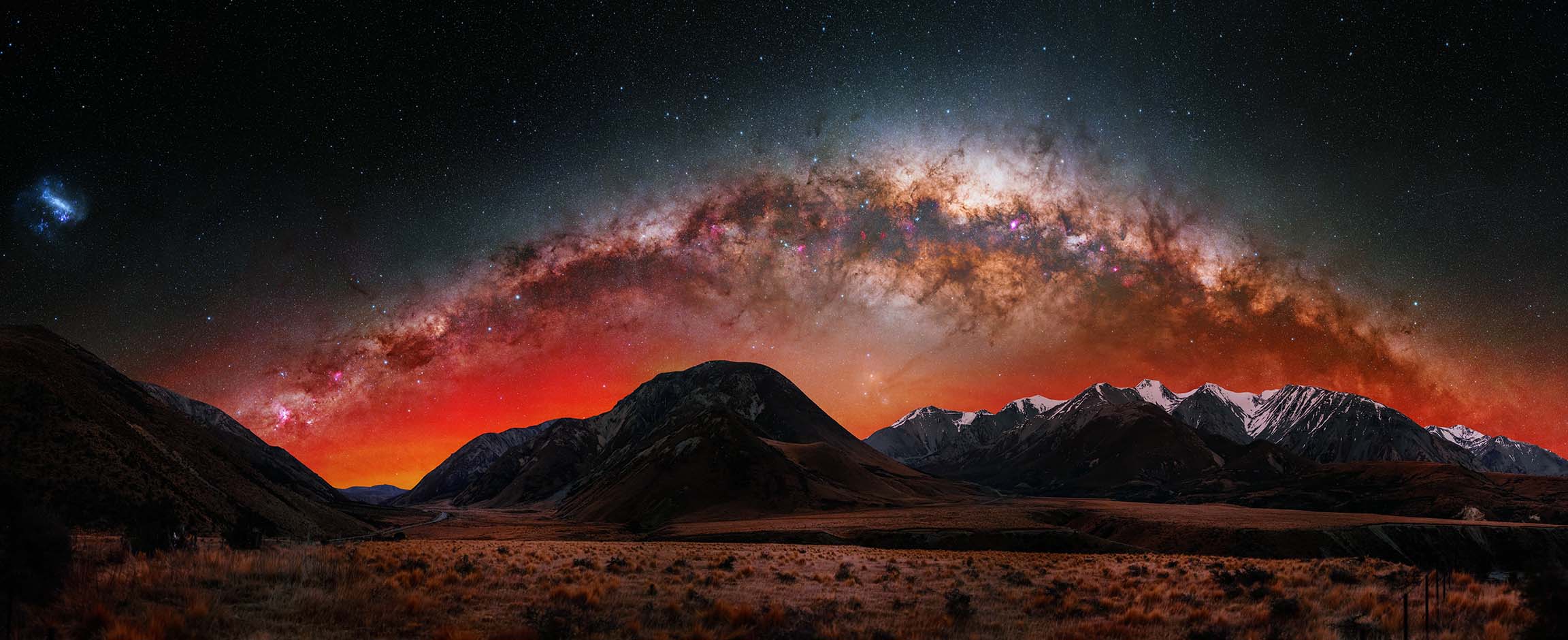Gadgets
19 magnificent images from the Astronomy Photographer of the Year shortlist

From a galactic worm gobbling stars to a plasma whale sliding across the sun’s surface, and an eerie dragon dancing with an aurora, the incredible universe is captured in stunning detail.
The Royal Observatory Greenwich has revealed the shortlisted images for the 2024 Astronomy Photographer of the Year. Chosen from over 3,500 submissions from photographers in 58 countries, the finalists will have their work displayed in an exhibition at the National Maritime Museum starting September 14, with the winner announced on September 12.
Gwenaël Blanck travelled to Australia in April 2023 to witness the 62-second total solar eclipse. This collage captures the corona, pink chromosphere, prominences, and Baily’s beads, showcasing the Moon’s rugged landscape. The image is composed of seven superimposed pictures, creating a mesmerizing view. Image: © Gwenaël Blanck (France)
The dreamlike effect is created by the veil of clouds and halos around the stars. Image: © Stefan Liebermann (Germany) No one can identify the individuals responsible for placing them there. Initially, a lengthy exposure of the stone running man was captured, followed by repositioning the tripod to capture a clear view of the horizon.
Image: © Vikas Chander (India)
“The Palette of the Himalayas”
During the Spring Festival, the Sun and altostratus clouds collaborated to create a massive corona hovering above the Himalayas. This resulted in a vast color palette above the snow-capped peaks.
Image: © Geshuang Chen (China)
“Saturn with Six Moons”
Saturn’s decreasing ring tilt has brought the moon Titan closer to Saturn from our vantage point than it has been in over a decade. Tethys is about to disappear behind Saturn in the center of the image, with Rhea, Enceladus, and Mimas on the left, and Dione to the lower right. The planet’s shadow on the rings, along with the Cassini and Encke divisions, are prominent.
Image: © Andy Casely (Australia)
“The Inner Dust Lanes of M104 (The Sombrero Galaxy)”
The intense brightness of M104’s core often obscures the details within the surrounding ring of dust. In this image, the dust appears to spiral into the core, floating on a wafer-thin layer as it descends towards the massive central black hole. The brighter, more colorful stars in the image actually belong to the foreground, a part of our Milky Way galaxy.
Image: © Kevin Morefield (USA)
“The Scream of a Dying Star”
The Cygnus supernova afterglow is a popular subject for astrophotographers, but this image aims to highlight rarely seen details, such as the outer envelope of the supernova remnant, using the high-quality sky and long exposure time. The title of the image is a reference to “The Scream,” the famous painting by Edvard Munch, symbolizing the lingering echo of the star’s demise in space.
Image: © Yann Sainty (France) Please rewrite this sentence. Please rewrite the following sentence:
“The cat lazily lay in the sun, soaking up its warmth.”
“The cat relaxed in the sunlight, enjoying its cozy warmth.” Please rewrite this sentence. Can you please rephrase this sentence?
-

 Destination8 months ago
Destination8 months agoSingapore Airlines CEO set to join board of Air India, BA News, BA
-

 Breaking News10 months ago
Breaking News10 months agoCroatia to reintroduce compulsory military draft as regional tensions soar
-

 Tech News12 months ago
Tech News12 months agoBangladeshi police agents accused of selling citizens’ personal information on Telegram
-

 Gadgets3 months ago
Gadgets3 months agoSupernatural Season 16 Revival News, Cast, Plot and Release Date
-

 Productivity11 months ago
Productivity11 months agoHow Your Contact Center Can Become A Customer Engagement Center
-

 Gadgets3 weeks ago
Gadgets3 weeks agoFallout Season 2 Potential Release Date, Cast, Plot and News
-

 Breaking News10 months ago
Breaking News10 months agoBangladesh crisis: Refaat Ahmed sworn in as Bangladesh’s new chief justice
-

 Toys12 months ago
Toys12 months ago15 of the Best Trike & Tricycles Mums Recommend























